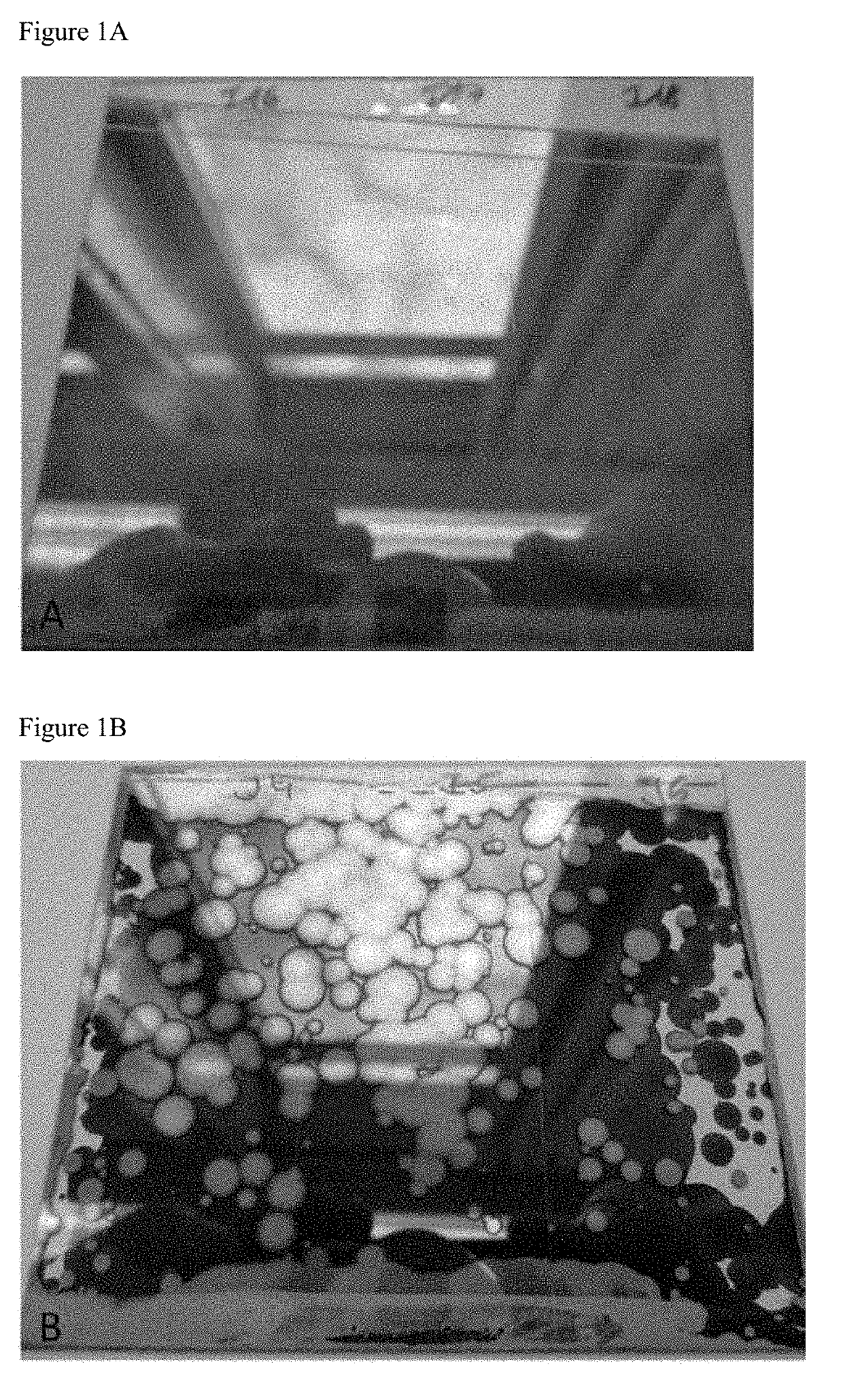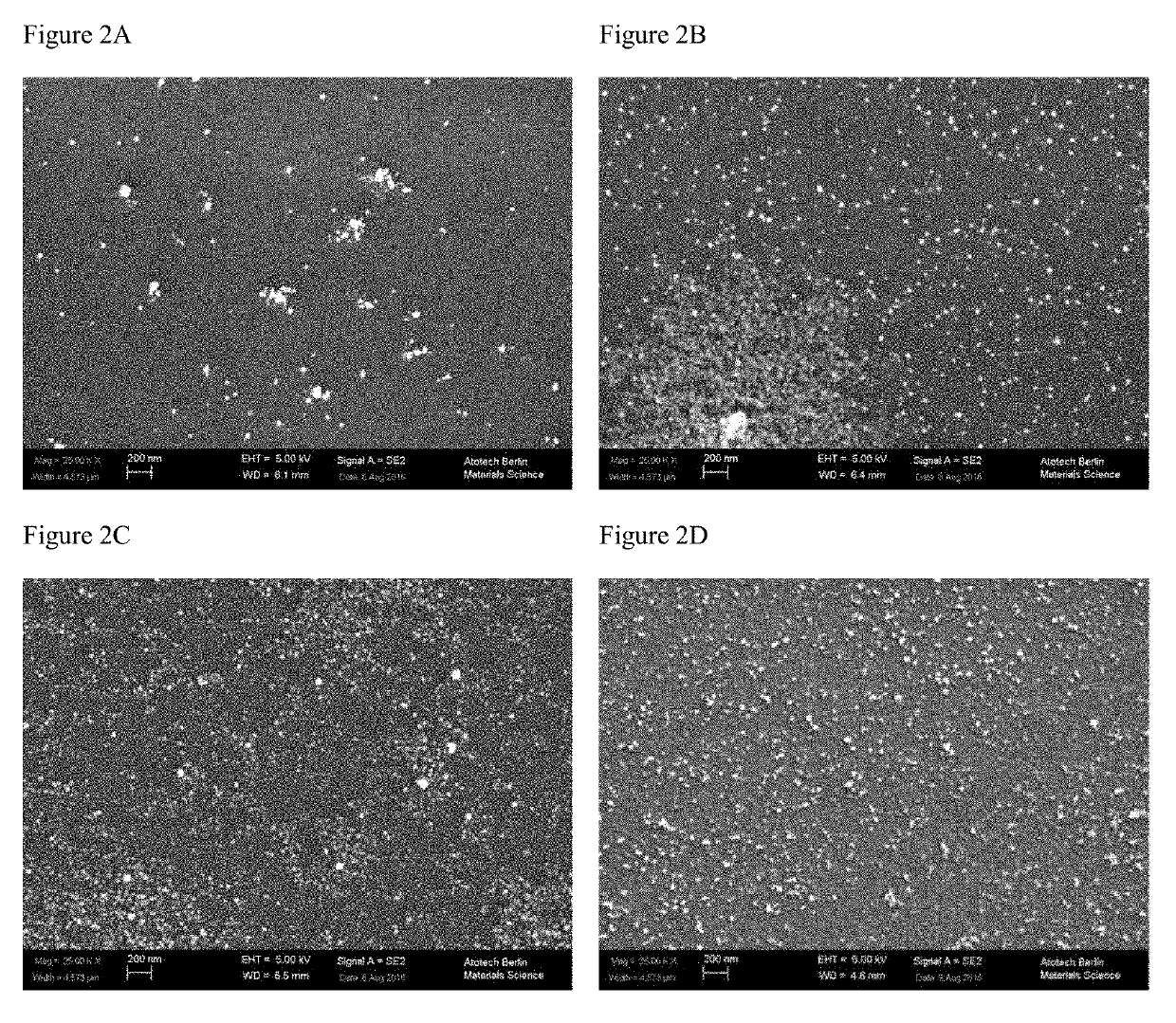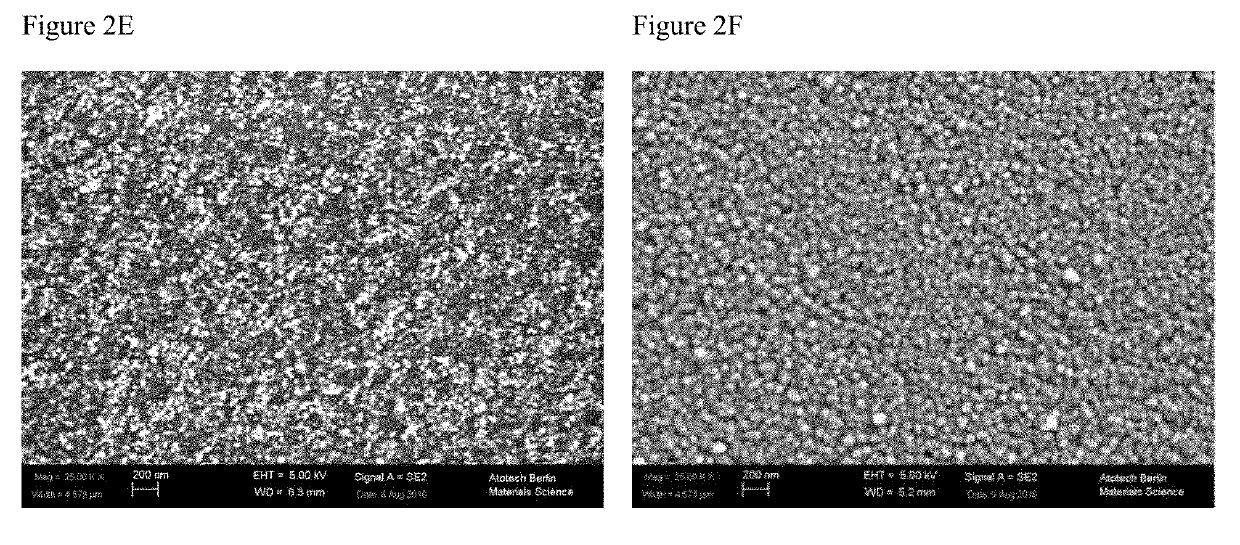Method for providing a multilayer coating on a surface of a substrate
a technology of multi-layer coating and substrate, which is applied in the direction of superimposed coating process, liquid/solution decomposition chemical coating, coating, etc., can solve the problems of limiting the input/output pitch of silicon, affecting the performance of silicon, and affecting the quality of silicon, etc., to achieve the effect of improving the coverage of metal, high adhesion of metal, and high coverag
- Summary
- Abstract
- Description
- Claims
- Application Information
AI Technical Summary
Benefits of technology
Problems solved by technology
Method used
Image
Examples
synthetic example 1
[0237]A 100 mL flask equipped with reflux condenser was with fed with nitrogen for 60 minutes at 70° C. to remove water and oxygen therefrom. Then, 30 g 2-ethyl-2-oxazolidine (300 mmol) was dissolved in 75 mL acetonitrile prior to the addition of 1.065 g methyl iodide (7.5 mmol). The colourless solution was stirred at 80° C. for 24 hours. Thereafter, 1.5 mL deionised water were added and the volatile components were removed under reduced pressure. 35.2 g of a yellow oily substance were obtained. The substance was dissolved in 35 mL acetone and poured into 400 mL diethyl ether. The supernatant solvent was removed by decantation.
[0238]The remaining oily substance was treated with 117 mL 6M hydrochloric acid and the mixture heated overnight under reflux. 150 mL deionised water were added resulting in an orange solution. Said solution was poured into 400 mL methanol followed by stirring for 5 minutes. After 30 minutes, a suspension was formed which was then filtered. The solid obtained ...
synthetic example 2
[0240]10 g (135 mmol) diethylamine and 9.5 g (102 mmol) epichlorohydrine were dissolved in 29.2 g water. The solution was then held at 70° C. for 24 h. 48.7 g of an aqueous solution containing 40 wt.-% of the respective version of the treatment additive TA2 (MW=200 Da) were obtained.
synthetic example 3
[0241]25 g (242 mmol) N1,N1-dimethylpropane-1,3-diamine and 16.4 g (176 mmol) epichlorohydrine were dissolved in 62.1 g water. The solution was then held at 70° C. for 17 h. 103.6 g of an aqueous solution containing 40 wt.-% of the respective other version of the treatment additive TA2 (MW=1300 Da) were obtained.
PUM
| Property | Measurement | Unit |
|---|---|---|
| surface roughness | aaaaa | aaaaa |
| temperature | aaaaa | aaaaa |
| temperature | aaaaa | aaaaa |
Abstract
Description
Claims
Application Information
 Login to View More
Login to View More - R&D
- Intellectual Property
- Life Sciences
- Materials
- Tech Scout
- Unparalleled Data Quality
- Higher Quality Content
- 60% Fewer Hallucinations
Browse by: Latest US Patents, China's latest patents, Technical Efficacy Thesaurus, Application Domain, Technology Topic, Popular Technical Reports.
© 2025 PatSnap. All rights reserved.Legal|Privacy policy|Modern Slavery Act Transparency Statement|Sitemap|About US| Contact US: help@patsnap.com



